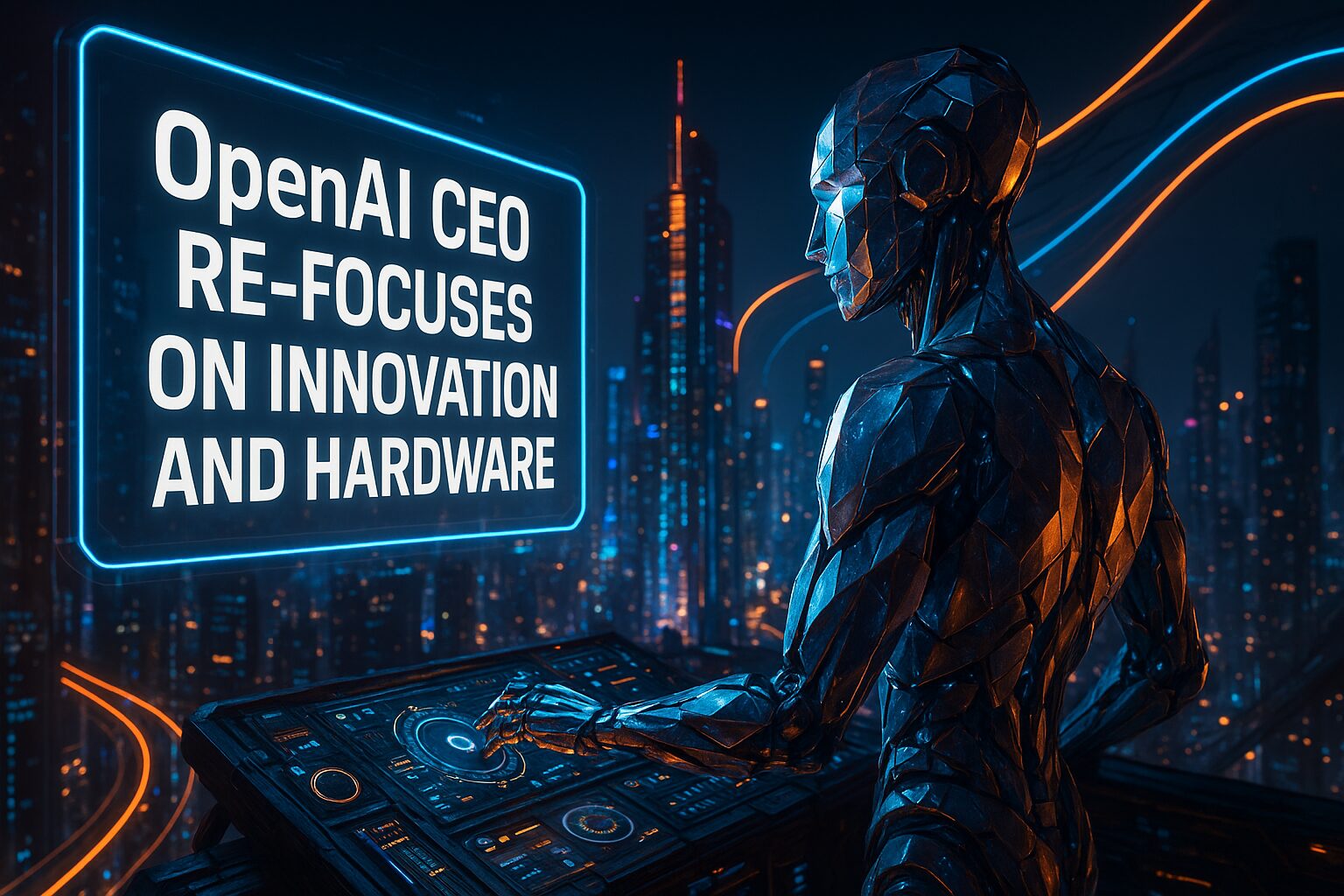
AI News Weekly – Issue #452: The power shift inside OpenAI – Aug 23rd 2025
# Navigating the New Frontiers of AI: Understanding the Impacts and Innovations
The momentum of artificial intelligence is undeniable, transforming industries at a rapid pace. With each advancement, AI continues to redefine its potential and significance in our technological landscape. Recent shifts, such as OpenAI’s organizational restructuring and collaborations among tech giants like Google and Meta, underscore the evolving narrative of AI. This narrative not only involves the innovations themselves but also their broader implications—ethical, environmental, and economic.
## OpenAI’s Strategic Shift: A Focus on the Future
Recent developments at OpenAI highlight a strategic shift in leadership aimed at maximizing focus and innovation. Appointing a new CEO of Applications, OpenAI has effectively freed Sam Altman, its CEO, to delve deeper into niche areas like Graphics Processing Units (GPUs) and brain-computer interfaces. This move is indicative of OpenAI’s broader commitment to enhancing the synergy between cutting-edge hardware and artificial intelligence in consumer electronics.
This strategic decision symbolizes a growing trend among leading AI firms: honing their focus to tackle a narrower range of challenges, thereby enhancing their potential to pioneer transformative technologies. Altman’s new focus areas—GPUs, known for their role in accelerating AI computations, and brain-computer interfaces, which promise unprecedented human-machine integration—are pivotal in catapulting AI into realms previously confined to science fiction.
## Environmental Considerations: Google’s Gemini Models
While OpenAI and others chart new waters, Google has cast a spotlight on another crucial area of AI development—the environmental impact. By releasing a technical paper on the energy, water, and carbon footprint of its Gemini models, Google invites us to confront the silent consequence of our tech-driven age. AI’s computational power demand not only translates to impressive capabilities but also to substantial environmental costs.
### Key Insights from Google’s Report:
– **Energy Consumption:** The energy demands of training AI models are immense, necessitating a reevaluation of power usage and efficiency.
– **Water and Carbon Footprint:** Both are significant in AI operations, aligning tech advancements with environmental sustainability has become non-negotiable.
Google’s transparency about the environmental toll of its models is a clarion call for the tech industry to pursue greener, more sustainable AI solutions. This paradigm shift towards responsible AI could well be the cornerstone of ethical tech in the 21st century.
## Collaborative Ventures in AI Innovation
In an intriguing move, Meta has partnered with Midjourney, a startup regarded for its AI image and video generation technology. According to Meta’s Chief AI Officer Alexandr Wang, shared on Threads, this partnership will involve licensing technology that could potentially reshape content creation’s digital landscape.
### Implications of the Meta-Midjourney Partnership:
– **Enhanced Creative Processes:** By merging Meta’s resources with Midjourney’s pioneering AI, the potential to revolutionize media is immense.
– **Shift in Content Dynamics:** The collaboration underscores an era where generative AI can democratize content creation, making sophisticated media accessible to more creators.
Meta’s synergy with Midjourney is emblematic of the collaborative spirit required to tap into AI’s full potential, heralding a new dawn in digital creativity.
## The Learning Moment: Striking a Balance
The advancements in AI bring both promise and peril. Netflix’s announcement underscores the flip side of this coin by urging filmmakers to adhere to set guidelines when using generative AI. At the same time, AI’s dual nature emerges starkly: it can be both a protector of information and a tool for malicious users. The challenge lies in crafting policies and educational frameworks that equip users to navigate this landscape judiciously.
### Strategies for Conscious AI Utilization:
1. **Ethical AI Education:** Equip tech users with knowledge about AI ethics, ensuring they understand both potential risks and benefits.
2. **Responsible AI Implementation:** Develop AI governance frameworks that balance innovation with ethical responsibility.
3. **Sustainable Development Goals:** Align AI growth with sustainable and equitable global progress, ensuring tech serves humanity positively.
The complex interplay between AI’s capabilities and human intent requires vigilance. By fostering an informed user base, we ensure AI remains a tool for progress rather than a catalyst for disruption.
## Emotional Closer: Why Does It Matter?
As we contemplate these burgeoning trends within AI, we must ask ourselves: How can we shape a future where technology aligns with ethical integrity and environmental sustainability? In a world driven by rapid technological change, it is incumbent upon innovators, policymakers, and society alike to champion a balanced approach—one that nurtures technological advancement while safeguarding our planet and the ethical fabric of our digital societies.
### Engaging Questions:
– **Who are the stakeholders responsible for steering AI towards a sustainable future?**
– **What role should each of us play in ensuring AI advances responsibly and ethically?**
The journey into the heart of AI is filled with promise and caution. As we navigate these waters, understanding the intricate tapestry of technological innovation and ethical responsibility will pave the way for a future that honors both progress and the planet.

